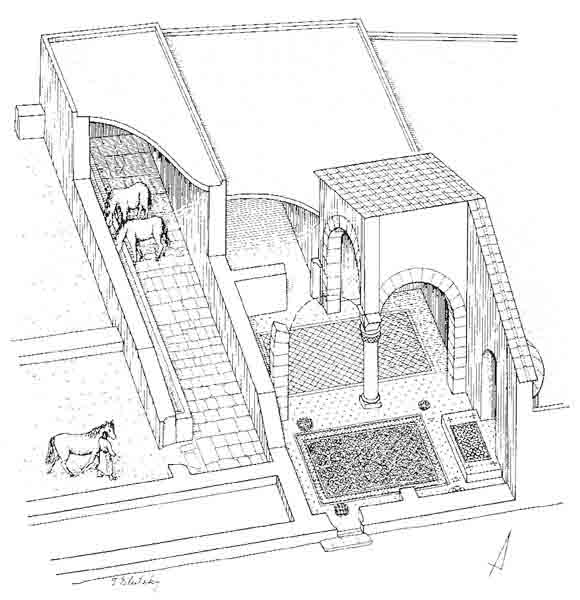Image Details

T. Slutsky, courtesy Yitzhak Magen
The pilgrim’s hospice was built just outside the monastery wall to avoid disruptions to the monks’ daily routine. Capable of housing between 60 and 70 travelers, the hospice is the largest discovered in the Judean desert and the only example securely dated to the Byzantine period.
Catering to all the guests’ needs, the hospice included a stable for pack animals (at left in the drawing), long, narrow, guest rooms (entered through the door at right) and a chapel (center). Built during the third stage of construction, the hospice chapel included mosaics with repeating patterns of rosettes and ribbons tied in intricate knots and columns topped by capitals decorated with a cross motif and a basket-shaped echinus, or rounded bottom.
